Simplicity in Tractor Mowers: Design and Impact
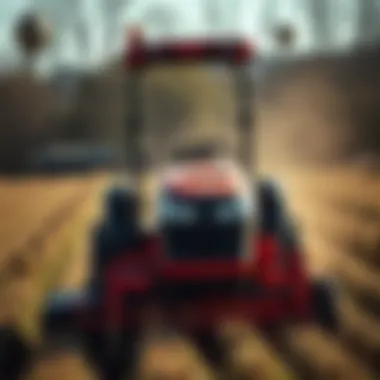
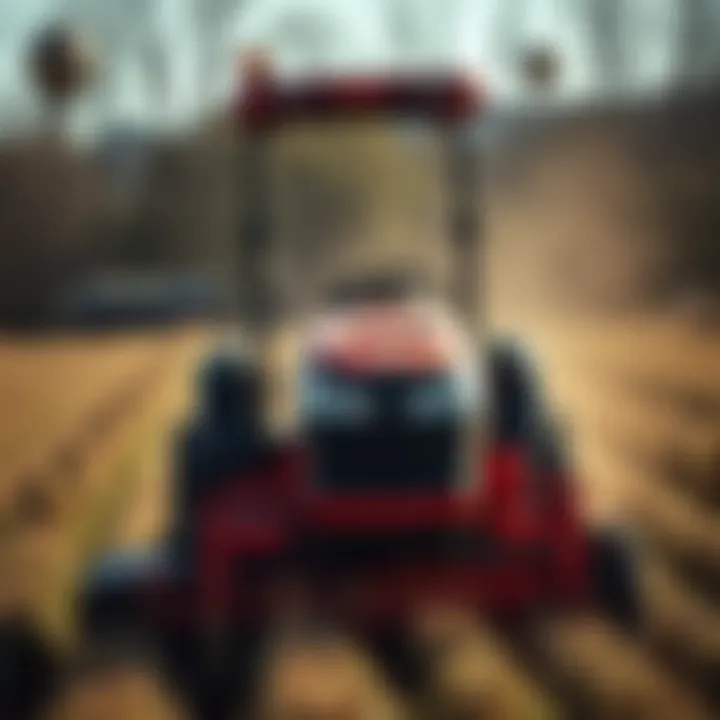
Intro
Agriculture, undoubtedly, has evolved over the years, transforming from labor-intensive practices to more mechanized and efficient approaches. Central to this transformation are tractor mowers, tools that not only enhance productivity but also embody the principles of simplicity in design and functionality. Understanding the understated mechanics behind these machines can lead us to appreciate their importance in modern farming.
In today's agricultural landscape, every second counts, and farmers are constantly seeking ways to streamline their operations. Tractor mowers play a crucial role in cutting grass, managing crops, and ensuring that the land remains healthy and maintainable. This article will explore how these machines have evolved, their operational features, and how their simplicity has profound implications on sustainability and efficiency.
Research and Data Analysis
The agricultural sector is constantly shifting, influenced by new technologies, climate changes, and consumer demands. To delve deeper into the realm of tractor mowers, it becomes essential to examine the core trends shaping this industry.
Latest Trends in Agriculture and Horticulture
Farming practices are becoming increasingly reliant on technology. This reliance can be seen in the following trends:
- Precision Farming: Incorporating data analytics to make more informed decisions about crop management.
- Automation: The rise of autonomous tractors and mowers that require less human intervention.
- Environmental Awareness: Farmers are more conscious of their ecological impact, which encourages the use of sustainable equipment like efficient tractor mowers.
As these trends take center stage, the simple design of tractor mowers stands out. Machines designed with user-friendliness in mind can save time and resources, making them indispensable in modern agriculture.
Statistical Insights into Crop Yields
Data supports that efficient machinery can lead to better crop yields. Recent studies show that adopting modern tractor mowers may increase productivity by as much as 30%. Crop inputs can be reduced significantly when mowing equipment is integrated correctly into overall management practices. This efficiency not only enhances yields but also maximizes the land's potential.
"The right tools can make all the difference between struggle and success for farmers."
Best Practices and Techniques
With emerging data and user feedback, certain best practices have come to light that enhance the experience of tractor mower users in agricultural settings.
Efficient Crop Management Strategies
Simplicity in design leads to ease of use. Farmers can adopt the following strategies to maximize their tractor mower experience:
- Routine Maintenance: Regular checks ensure that machines function at their best, minimizing breakdowns.
- Training: Familiarity with machine capabilities can drastically improve operation efficiency.
- Proper Attachment Use: Understanding which attachments serve best can optimize mowing tasks and overall performance.
Sustainable Horticultural Techniques
Sustainability is more than a buzzword; it's increasingly important in farming. Simplicity in equipment allows for practices that protect land and resources. Some methods include:
- Organic Cover Cropping: Using mower attachments to manage cover crops keeps the soil healthy and prevents erosion.
- Mulching with Mowers: This technique not only prevents weed growth but also enriches the soil as decomposing plants return nutrients.
Pest and Disease Management
Every farmer knows that pests and diseases can derail growth and damage yields. Understanding how tractor mowers fit into this challenge is crucial.
Common Pests and Diseases in Crops
Certain pests and diseases can undermine the best agricultural practices. Familiar pests include:
- Aphids: Known to suck sap from plants, leading to wilting.
- Fungus: Various types, including rust and powdery mildew, can devastate crop health.
Integrated Pest Management Strategies
Here's where tractor mowers can make a significant impact. By mowing at the right times, farmers can:
- Remove Pest Habitats: Frequent mowing disrupts breeding cycles of pests like grasshoppers.
- Expose Fungal Spores: Cutting allows sunlight and air circulation, which can inhibit fungal growth.
As the conversation around tractor mowers philosophies unfolds, the simplicity in design and functionality remains at the core, enabling farmers to address challenges effectively while promoting sustainable practices. The next sections will further elaborate on user experiences and product recommendations, tying together technology with practical application in the field.
For further reading, check resources from USDA and University of California Agriculture & Natural Resources.
The exploration into tractor mowers is more than just about equipment; it's about harnessing simplicity to make a profound impact on agriculture.
Intro to Tractor Mowers
Tractor mowers are at the forefront of modern agricultural practices, blending functionality with simplicity in their design. They are indispensable tools for farmers and landscape professionals alike, offering efficiency and effectiveness in maintaining vast fields. Understanding the design and operational benefits of these machines allows users to harness their full potential in agricultural environments.
Simplicity in tractor mowers translates to ease of use, making them accessible even to those new to farming. With features designed for straightforward operation, farmers can focus on what truly matters—getting the job done. As we delve deeper into this topic, we will explore not only the components that make up these machines but also the philosophy of simplicity that underpins their design, ensuring they remain robust, yet uncomplicated.
Defining Tractor Mowers
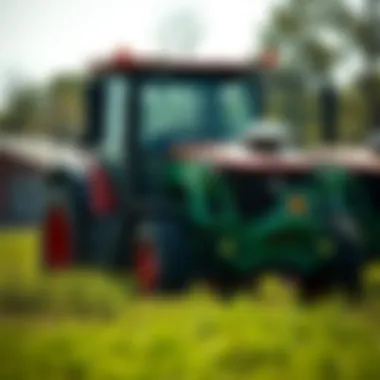
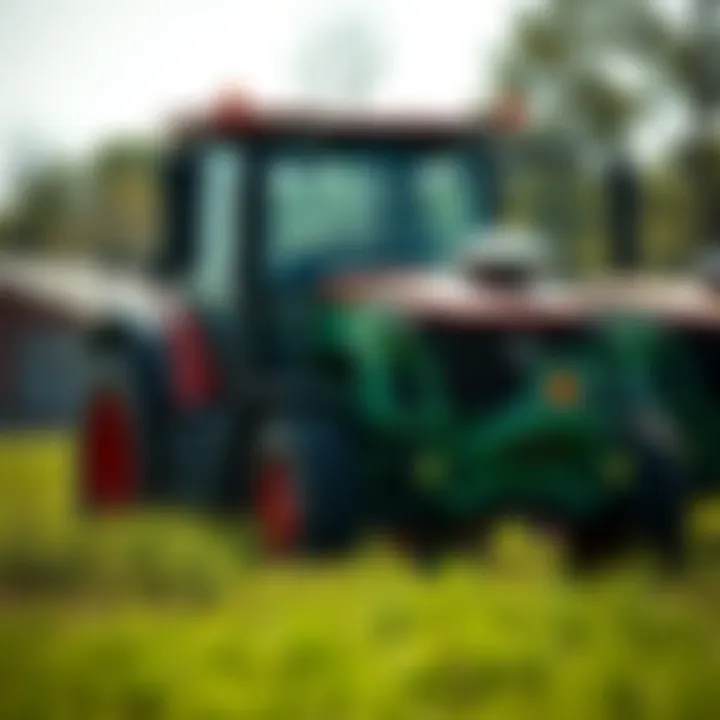
Tractor mowers refer to a category of agricultural machinery that is specifically designed to cut grass and other vegetation efficiently. Unlike conventional lawn mowers, tractor mowers are typically larger and can handle tougher terrains and larger areas. They come equipped with powerful engines, which can be either gas-powered or electric, enabling them to tackle large fields with ease.
These machines can vary significantly in size and capability, ranging from small ride-on mowers suited for residential landscapes to larger, more robust models engineered for extensive agricultural operations. Their cutting mechanisms often include rotary blades or flail systems, providing versatility depending on the application.
Understanding Simplicity in Design
Simplicity in the design of tractor mowers focuses on making them easy to use while maintaining high performance. The philosophy behind this approach stems from the belief that effective farming tools should enhance productivity without overwhelming the user with complicated controls or maintenance demands. This principle can take shape in several ways:
- User-Friendly Controls: Many modern tractor mowers come with intuitive controls that require minimal training. Farmers can quickly learn to operate these machines, allowing them to start mowing with just a short introduction.
- Minimal Maintenance Requirements: The best designs prioritize components that are easy to access for routine checks and repairs. A mower that requires less frequent maintenance not only saves time but also reduces long-term costs for farmers.
- Robustness and Reliability: While simple, these machines do not compromise on strength. Built to last, many tractor mowers can endure various weather conditions and rugged terrains without faltering.
In an environment where time is often of the essence, the simplicity in design of tractor mowers transforms agricultural practices, making them not just a tool, but a partner in farming success.
Historical Context of Tractor Mowers
Understanding the historical context of tractor mowers is pivotal in appreciating their design and functionality. These machines didn’t just pop up overnight; they evolved through centuries of agricultural necessity. During the late 19th and early 20th centuries, farming needed transformation due to increasing demands for food alongside rapidly expanding urban populations. Farmers sought ways to improve efficiency and productivity. This led to significant innovations that shaped what we now recognize as tractor mowers.
Evolution of Agricultural Machinery
The journey begins with the invention of the first mechanical reapers and threshers in the mid-1800s. For instance, Cyrus McCormick’s reaper marked a turning point, reducing the amount of labor required for harvesting. As these innovations spread, they sparked a wave of mechanization across various agricultural practices.
In the early 20th century, the introduction of the internal combustion engine brought a revolutionary change. Previously, horses and oxen did the heavy lifting in fields. With engines powering farm machinery, the pace of work accelerated significantly. This shift not only changed the physical landscape of farms but also transformed agricultural economics. More land could now be cultivated in less time, allowing for expanded production capacity.
The incorporation of tractor mowers was the next logical step. These machines combined cutting power and mobility, making them essential for managing larger fields. Over the decades, manufacturers like John Deere and Massey Ferguson fine-tuned design elements. Improvements in weight distribution, engine size, and cutting mechanisms led to more efficient mowers that farmers could operate with ease.
Key Innovations Over the Decades
As technology advanced, so did the features of tractor mowers. The mid-century saw innovations like hydraulic systems, which dramatically improved the maneuverability of tractors. Farmers could now adjust their equipment with precision, adapting to the varying needs of their fields. The addition of roll bars and seat belts also made these machines safer for operators.
Another milestone was the introduction of GPS technology in the late 1990s. Suddenly, farmers could navigate fields with an accuracy that was unthinkable before. This allowed for better planning of sowing and harvesting schedules, leading to reduced waste and higher yields. The software became an increasingly critical component, integrating data for optimized performance.
Some of the notable innovations in tractor mowers include:
- Improved Cutting Systems: Initiatives to create high-velocity blades and multi-directional cutting enhances not only efficiency but also results in a cleaner cut.
- Electric Mowers: The introduction of battery-powered models has begun to change the game for those concerned about environmental sustainability.
- User-Friendly Controls: Ergonomically designed controls make operation simpler, appealing to a broader range of users, from seasoned farmers to newcomers.
With these advancements, tractor mowers have traversed from mere luxuries to vital components of modern agricultural practices. Understanding their evolution provides insights into why simplicity in design matters today.
In essence, the historical context of tractor mowers highlights an incessant quest for efficiency and adaptability. As we dig deeper into their designs, functionality, and real-world applications, it becomes clearer how these machines have shifted from complex, cumbersome units to streamlined tools that embody simplicity. The roots of these innovations inform contemporary choices for farmers and enthusiasts alike.
Core Components of Tractor Mowers
Understanding the core components of tractor mowers is essential for appreciating their design and functionality. Each part plays a significant role in the overall performance and efficiency of these machines, which are crucial in agricultural settings. When farmers understand these components, they can make informed decisions on maintenance, repairs, and upgrades that can lead to better productivity and longevity of the equipment. Let's delve into some of the most critical components that make tractor mowers effective in their tasks.
Engine Types and Their Impact
The engine is the heart of any tractor mower. Different types of engines offer various advantages, and their selection can deeply influence the performance and operational cost. Commonly, you'll find two types of engines in tractor mowers: gasoline and diesel.
- Gasoline Engines: These engines are generally lighter and can offer quick start options, which is beneficial for smaller farms that do not require heavy-duty machines. They tend to be more affordable upfront but may require more frequent visits to the gas station.
- Diesel Engines: While typically more expensive, these engines are often more efficient and durable. They provide greater torque and can handle larger mowing tasks without stalling. Farmers with larger properties often favor diesel for its power and longevity.
The choice of engine directly affects the mower's operational cost, as diesel engines typically consume less fuel for the same work compared to gasoline engines. Ultimately, farmers must assess their land's size and the type of jobs they expect the tractor mower to perform when choosing an engine type.
Cutting Mechanisms Explained
The cutting mechanism is where the rubber meets the road—literally and figuratively. The design and quality of the cutting blades vary, and this affects how well the mower performs its primary job: grass cutting. Two common cutting mechanisms in tractor mowers are reel mowers and rotary mowers.
- Reel Mowers: These consist of a cylinder of blades that rotates around a vertical axis. They are known for giving a clean cut that promotes healthier grass growth. This option is often preferred for finer lawns and gardening applications.
- Rotary Mowers: On the other hand, rotary mowers use a horizontal spinning blade to chop grass. This type is more versatile and can tackle tougher terrains and longer grass. As a result, rotary mowers are generally favored in agricultural applications where rougher fields need attention.
Each cutting mechanism has its benefits and drawbacks, influencing cut quality, ease of use, and maintenance needs. Choosing the correct type ultimately aligns with the specific mowing tasks a farmer intends to perform.
Transmission Systems: Simplicity vs. Complexity
The transmission system in a tractor mower can be thought of as the vehicle’s nervous system: it determines how power is transferred from the engine to the wheels. Generally classified into standard and hydrostatic transmissions, the choice profoundly impacts usability and maintenance.
- Standard Transmission: This type usually involves a series of gears and tends to be more mechanically straightforward. While it can be more labor-intensive regarding operation, especially for inexperienced users, it usually costs less and is often easier to repair.
- Hydrostatic Transmission: This option utilizes fluid pressure to change speed and direction. It's easier for users who prefer to work with less manual shifting, providing smoother transitions during operation. However, complexities in these systems may require specialized knowledge for maintenance.
Ultimately, while simpler systems might appeal to those who prefer straightforward technology, hydrostatic systems can offer a more comfortable experience. The choice boils down to a farmer’s operational needs and willingness to engage in upkeep,
A well-designed tractor mower with the right core components saves time, reduces fuel consumption, and leads to better crop yields. Understanding the systems at play allows farmers to optimize their machinery and agricultural practices.
By grasping the intricacies of these core components, farmers can not only enhance their mowers' performance but can also refine their farming strategies. Balancing simplicity and complexity in design ensures they choose machinery that meets their operational needs while promoting efficiency.
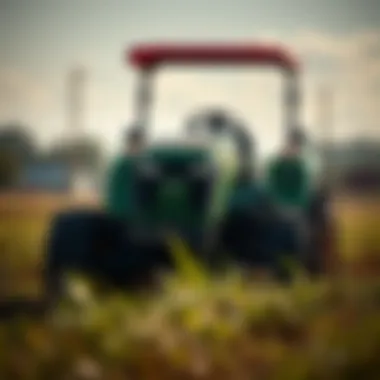

Operational Features and Usability
In the realm of agriculture, efficiency isn’t merely a bonus; it’s a necessity. The operational features and usability of tractor mowers stand at the forefront of this discussion, embodying principles that streamline farmers' daily functions. A simple design can yield profound benefits, providing an experience that marries ease with effectiveness. As fields stretch endlessly and tasks pile up, understanding these features can equip farmers with critical insights into making their work both productive and less burdensome.
Ease of Use for Farmers
When it comes to tractor mowers, ease of use is often the name of the game. A farmer's day involves a whirlwind of responsibilities, from planting to harvesting. The last thing anyone needs is an overcomplicated machine that feels like wrestling a bull.
Consider intuitive controls. Many modern mower designs highlight ergonomically placed buttons and levers that feel natural in the hands of the operator. This design principle typically translates to quicker learning curves, allowing users – whether seasoned veterans or novices – to jump in without needing an owner's manual the size of a dictionary. Additionally, features like adjustable seats and user-friendly dashboards have become commonplace, enhancing comfort during long hours spent in the field.
Another crucial aspect of usability lies in the versatility of these machines. The ability to change attachments effortlessly or switch between different modes is a game-changer. It means a farmer can switch from mowing to tilling without burning daylight, a factor that’s often as precious as gold during peak seasons.
Farmers often say, “Time is money.” A simple machine that serves multiple functions can be akin to striking gold in the fields.
Maintenance Requirements
Even the simplest tractor mower requires care, but lower maintenance demands can significantly ease a farmer's burden. Maintenance isn't just a chore; it's an essential practice that ensures longevity and efficiency of the machinery. Simple designs often incorporate fewer moving parts, which can consequently lessen the likelihood of breakdowns.
Routine tasks, like changing the oil or sharpening blades, should ideally not become another mountain to climb. Many farmers appreciate machinery that allows for these tasks to be carried out with minimal fuss, freeing them to focus on more pressing matters. For instance, some models feature easily accessible components specifically engineered for quick maintenance, which can often be performed without professional assistance.
Users also favor models that have support networks available, whether it’s through user manuals that are straightforward or online forums on platforms like Reddit and Facebook where they can share experiences.
Ultimately, reducing complexity in maintenance translates to reduced downtime. A reliable mower that requires only easy maintenance can be a farmer's best friend, allowing them to stay on the job without unexpected interruptions. In an industry where every hour counts, simplicity can be a game changer.
Advantages of Simple Tractor Mowers
When delving into the realm of tractor mowers, one might stumble upon the profound advantages offered by those designed with simplicity in mind. These mowers are more than just tools; they embody concepts that resonate deeply with the needs of today’s farmers. In an age where complexity often reigns supreme, these straightforward machines stand out by providing solutions that enhance accessibility and functionality.
Cost-Effectiveness in Farming Operations
At the forefront of the advantages is the cost-effectiveness that simple tractor mowers provide to farming operations. Let's break it down. Simple designs typically require less specialized information to repair and maintain. If you’ve ever faced a hefty bill for machinery breakdowns, you understand the value of cutting down on substantial repair costs. Farmers can easily troubleshoot issues, reducing dependency on professional service, which can be both a time and money drain.
Consider, for example, a John Deere 1025R compact utility tractor. With fewer complex electronic parts, it avoids many issues that plague more sophisticated models. As parts are cheaper and easier to get, the overall cost of ownership is minimized. Farmers appreciate this due to tight margins—we all know that a penny saved can make a world of difference in profitability.
Moreover, simple tractor mowers tend to be more fuel-efficient. These machines are often built for efficiency, not excess. This means that daily operational costs for fuel should not put a hole in the wallet. Reliable and consistent performance reduces the risk of unexpected expenditures, making them more appealing within the expansive agricultural market.
Reducing Environmental Impact
The environmental impact of farming equipment is an ongoing conversation, and when it comes to tractor mowers, simplicity can lead to substantial gains in sustainability. Simpler designs often utilize fewer materials and energy during production. This contributes to a smaller carbon footprint, which is essential in an era where climate concerns are prevalent.
Furthermore, these mowers usually emit fewer pollutants. As they are less reliant on complex technology, their operational emissions can be significantly reduced. Electrifying statistics indicate that using a conventional mower can result in lower greenhouse gas emissions. Therefore, opting for a simpler design not only makes financial sense but is also a responsible choice for the environment.
"Each choice to simplify our machinery can lead to a rippling effect on agricultural sustainability."
By focusing on straightforward mechanics, farmers can also benefit from the longevity of these machines. With fewer intricate parts that could fail, many simple mowers are built to last. This durability means that less frequent replacements are needed, lessening waste. The combination of robust build and eco-conscious operation positions simple tractor mowers firmly in the realm of sustainable agriculture.
In summary, the advantages of simple tractor mowers extend beyond mere operational ease. They encapsulate a blend of cost-effectiveness and a commitment to environmental stewardship, bringing forth a series of benefits that resonate with both farmers and the broader agricultural community.
User Experiences and Case Studies
In the world of agriculture, the experiences of users can provide invaluable insights that contribute to improved designs and functionalities in products like tractor mowers. These narratives shaped by farmers and their hands-on use of machinery offer a practical understanding that goes beyond technical specs and marketing claims. Evaluating user experiences not only informs prospective buyers but also influences manufacturers regarding needed adjustments or innovations in design.
Amidst the benefits of simplicity, there’s the very real consideration of how these machines operate in various conditions and environments. Evaluating user experiences sheds light on common performance trends, usability, and maintenance needs, which are critical in the selection and utilization of tractor mowers.
"Understanding how a piece of machinery holds up in the field can save a farmer time and money, and perhaps even prevent future headaches."
Farmers' Insights on Performance
Feedback from farmers offers a treasure trove of insights into how tractor mowers perform in real-world settings. An individual who has used a Husqvarna TS 348XD, for instance, may share that its pivoting front axle allows for better maneuverability over uneven terrain. This type of first-hand knowledge helps other users identify features that align with their specific operational needs.
Farmers have also noted that simpler models tend to lend themselves to smoother operation. Many often point out aspects like ease of starting the engine and the intuitive controls as key performance indicators. For example, those who have engaged in large-scale grass cutting appreciate mowers with simple cutting height adjustments.
Key insights from farmers include:
- Ease of Maintenance: Simplicity often means fewer parts to worry about, making routine maintenance straightforward. This is a win-win.
- Durability: Users express their appreciation for mowers that withstand the rigors of daily use, reducing the frequency of repairs.
- Fuel Efficiency: Many farmers emphasize the savings in operation costs associated with mower models that don't have unnecessary complications.
Real-Life Applications in Diverse Environments
Understanding how tractor mowers perform in diverse agricultural contexts highlights their adaptability and usability. From large estates in the Midwest to small farms on rocky hillsides, these machines play a crucial role in facilitating farm management tasks that might otherwise be labor-intensive or impossible.
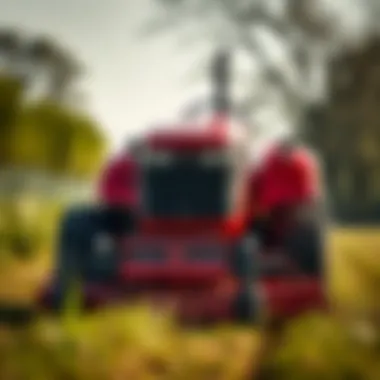
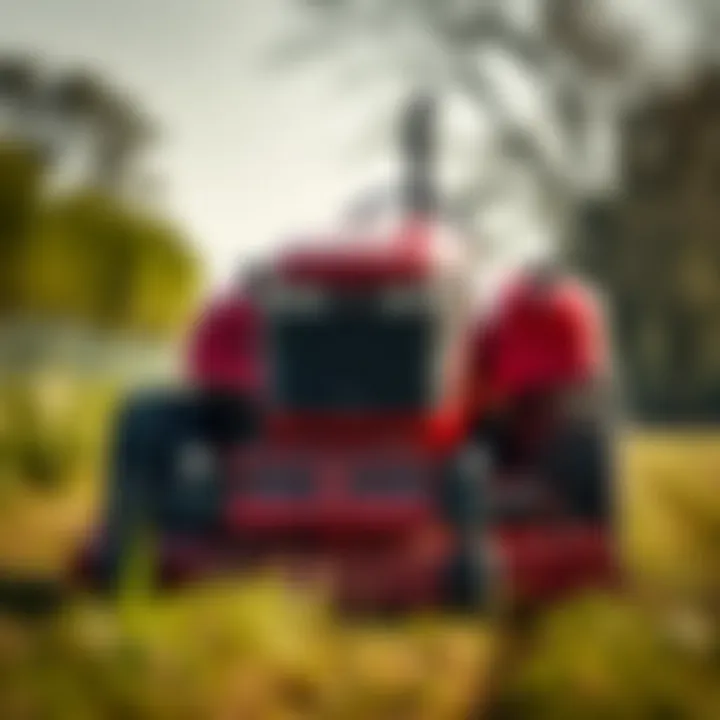
For instance, the real-world application of a John Deere X350 shows how the machine excels in residential areas where space is tight, yet the need for efficiency is paramount. Farmers working in different environments often provide comparative studies that illustrate:
- Versatility: A mower used in a vineyard might need different features compared to one in a sprawling field of hay. The user comments shed light on what works in various landscapes.
- Adaptation: Farmers share stories about modifying their mowers. One user might attach a snow plow in winter, showcasing the mower's performance versatility.
- Resilience to Weather Conditions: Experiences shared by farmers dealing with wet or dry climates can influence future models to offer better performance in a variety of conditions.
By collecting these narratives, it not only composes a map of performance under varying influences, but creates a community of shared learning.
In the end, farmers’ insights and case studies provide critical context. They turn abstract features into concrete understandings of how essential tractor mowers can be in today’s agricultural climate.
Market Trends and Product Recommendations
The realm of tractor mowers is evolving rapidly, propelled by input from diverse stakeholders within the agricultural community. Recognizing market trends influences how farmers select and utilize these machines, ensuring they receive optimal performance and value. In this article, we’ll dissect current trends and offer product recommendations, which can be pivotal in shaping one's farming strategies.
Popular Models in the Market
With numerous manufacturers vying for attention, some models have carved out a niche due to their functionality, reliability, and ease of use. Here are a few noteworthy choices:
- John Deere X748: Known for its versatility, this mower excels in various terrains. It offers smooth operation, capable of mowing in increasingly tight spaces.
- Husqvarna YT4V48: This mower stands out due to its balance between price and performance. Ideal for medium-sized farms, its user-friendly controls make it a favorite among less experienced operators.
- Cub Cadet XT1 Enduro Series: This mower not only provides a robust cutting performance, but it’s also designed with a solid build. Farmers often praise its durability, making it suitable for rigorous agricultural tasks.
These models emphasize simplicity without compromising on features, catering to a range of farming needs. Each machine uniquely embodies the principle of ease in operation, which is a fundamental aspect of modern tractor mower design.
"When farmers select a mower, the balance between simplicity and functionality becomes key to efficiency and productivity."
Choosing the Right Mower for Your Needs
Selecting a tractor mower is not a one-size-fits-all endeavor. Farmers should consider several factors to ensure they make an informed decision:
- Field Size and Terrain: The size and landscape of the terrain dictate the type of mower. A small lawn mower won't suffice for larger fields, whereas a more robust, professional model might be an overkill for smaller, flat areas.
- Maintenance Requirements: Some mowers demand rigorous maintenance, while others are designed with simplicity in mind for upkeep. Understanding how much time and effort you're willing to invest in maintenance is crucial.
- Fuel Efficiency: Farm costs add up quick, so look for mowers with better fuel economy options. Diesel mowers tend to be more fuel-efficient compared to gasoline ones.
- Budget Considerations: Lastly, always keep your budget in check. While investing in higher-end models can be tempting, assess whether you genuinely need those features or if a simpler, more cost-effective option could serve your purposes adequately.
Navigating the market involves weighing these parameters, leading to a more streamlined selection process. Farmers are increasingly leaning towards tractors that marry simplicity with performance, directly impacting their operational efficiency.
In summary, understanding the market dynamics and the choices available is essential for any farmer. By being aware of trending models and knowing what to prioritize in a mower, operators can enhance their productivity while embracing the essence of simplicity.
Future of Simplicity in Agricultural Machinery
As we gaze into the future, the role of simplicity in agricultural machinery, especially tractor mowers, becomes even more significant. The increasing complexities of modern farming need to be matched with a focus on streamlined approaches. This ensures that farmers can work efficiently while remaining cost-effective. Simplicity in design isn’t just about aesthetics; it’s about functionality that resonates with the practical needs of users.
Technological Advances on the Horizon
Technology is moving at a breakneck pace, and agricultural machinery is no exception. Innovations such as automation, IoT integration, and data analytics are on the rise, promising to reshape how tractor mowers operate. For instance, automated mowing systems are making waves. These systems can adapt the mowing sessions based on soil conditions and crop types, providing precise solutions without the hassle of manual intervention.
Moreover, remote monitoring features will increasingly allow farmers to keep tabs on their equipment, ensuring optimal performance without constant hands-on oversight. This breed of technology focuses on reducing the decision-making burden while improving the reliability of operations.
- Key Innovations to Watch:
- Automated controls for efficient operation.
- Sensors to gauge soil health and moisture content.
- Advanced battery technology for electric mowers, enhancing eco-friendliness with minimal noise pollution.
These technological advances promise to marry simplicity with intelligence, creating machines that require less input while delivering more output.
Potential Shifts in Design Philosophy
The design philosophy underpinning tractor mowers appears to be pivoting towards minimalism. This shift reflects the growing understanding that simplicity doesn’t have to mean a lack of sophistication. Instead, it can signify smart engineering choices that make maintenance and usability more intuitive.
Farmers are increasingly favoring machinery that is easy to troubleshoot. A shift towards modular designs allows for quick repairs and replacements, drastically cutting downtime. This puts the power back into the hands of farmers, allowing them to manage their equipment independently without relying heavily on specialized skills.
Furthermore, the aesthetics of these machines are evolving too. Modern designs embrace an ergonomic approach, ensuring that operators can work comfortably without unnecessary strain.
In summary, the future of simplicity in agricultural machinery lies in blending smart technology with intuitive design principles. It aims to create equipment that is not only functional but also accessible, ensuring farmers can keep pace with an ever-changing landscape.
“Simplifying technology doesn’t mean taking away functionality, it means enhancing ease of use while maintaining effectiveness.”
Resources for Further Reading
- Wikipedia on Tractor Mowers
- Britannica on Agricultural Machinery
- Reddit Farming Community
- U.S. Department of Agriculture
Epilogue: Embracing Simplicity
Simplicity in tractor mowers not only affects how these machines are built but resonates deeply with their operational essence. This article has journeyed through various elements, starting from their history to their future possibilities, all while underscoring the significance of a straightforward design. A core truth emerges: simplicity leads to practicality, which is essential for effective agricultural practices.
There are a number of key reasons why embracing this philosophy is crucial:
- Enhanced Usability: Simplicity often translates to user-friendly designs that make it easier for farmers to operate mowers without extensive training. This allows them to focus on what truly matters: their crops.
- Cost Efficiency: Simple designs typically result in lower manufacturing and maintenance costs. Farmers can invest their hard-earned money more wisely and allocate funds towards other vital resources.
- Reliability: As noted throughout the discussion on components, tractors designed with fewer complex parts generally stand the test of time better than overly intricate counterparts. When you're out in the field, having a machine you can trust is perhaps the most reassuring thought.
"The simplest solutions are often the most powerful, particularly in an industry where efficiency is non-negotiable."
Moreover, simplicity is more than just a construction philosophy; it connects directly to the broader implications of sustainable agriculture. Mowers that are easier to maintain and operate have less of an ecological impact. Moreover, by maintaining efficiency and reducing energy consumption, these machines represent a step toward a greener approach to farming.















